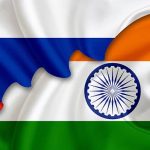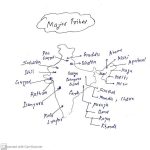![TRIFED | Development of Tribal People in India [UPSC Notes]](https://iasbio.com/wp-content/uploads/2023/06/images-2023-06-13T153342.179.jpeg)
Table of Contents
Tribal Affairs
Tribal Population = 104 million (2011) | 8.6%
Recent Developments of Tribal People
- 8 out of 10 children of migrant parents working on worksites are deprived of education.
- Tribal groups of MP and Chattisgarh, who constitutes 20% of the population, are doing poorly, economically and educationally. Moreover they never form the part of regular political discourse and are mostly ignored in the elections. Due their fragmented and scattered distribution, they fail for from a bloc and hence a ‘vote bank’ and as a result — ignored AF!
- Tribal Children from remote forest areas have unfurled the Tricolour at the top of Mount Everest! (PM mentioned in ID speech)
- Sanitary pads made by adivasi women is in high demand @hyderabad
They recently killed an American Tourist.
TRIFED — Tribal Cooperative Marketing Development Federation of India
- TRIFED is an apex organisation at National Level and functioning under the administrative control of Ministry of Tribal Affairs.
- What it does ?
- TRIFED is serving the interests of Tribals, who are engaged in collection of NTFP and making of Tribal Art & Handicraft Products for their livelihood so as to ensure better remunerative price for their products as well as for the socio-economic betterment through Self Help Groups, Empanelled NGOs, State level Tribal Development Corporations, Forest Development Corporations for undertaking marketing development of the tribal products.
- It also organizes exhibitions like National Tribal Craft Expo called “Aadi Mahotsav” etc. in which it promotes and markets tribal products.
- Retail Inventory Software (RIS) — will bring greater transparency and control over various transactions under Retail sale
|
Tribes of Andaman & Nicobar Islands
|
|
Tribal Education
TSR Subhramaniyam committee recommendation of Bilingual System
|
Dard Aryans — A tribe from Ladakh
Bru Tribe of Mizoram and Tripura
MIZORAM(home) → TRIPURA
- The Bru people (also referred to as Reangs), were inhabitants of Mizoram who were displaced from Mizoram to live in relief camps in Tripura in 1997 on account of ethnic conflicts.
- Original inhabitant of MIZORAM, presently living in TRIPURA
- Present situation — miserable
- Special Polling Booths for Bru People at Mizoram State Assembly Elections 2018 — showing acceptance and inclusiveness
- Read More — http://www.fantasticfundas.com/2015/06/the-bru-issue-tribe-repatriation-idps.html
Initiatives of Government for Tribal Welfare
- ST and Traditional Forest Dwellers (Recognition of Forest Rights) Act, 2006
- Right to ensures control over forest resources — ownership, access to collect, use and dispose minor forest produce
- Right to protect, conserve or manages any community forest resource
- Funds for Tribal Development — Tribal Sub-Plan
- Grants-in-aid under A. 275(1) — 100% grant from GoI
- MSP for MFP —for 24 MFP in all the states
- About 100 million tribals depend on MFPs for food, shelter, medicines and cash income (Yojana Aug)
- Development of PVTG — land dev, agri dev, animal husbandry, Insurance schemes etc
- Education Related — pre-metric and post-metric scholarships | support to parents and financial assistance to pursue higher education -> National Fellowship and Scholarship for Higher Education of ST students
- Financial Inclusion — NSTFDC
|
Forest Rights Act, 2006
Why poor implementation?
What to do? 1. Central government should set clear targets and their attainment should be incentivised by fiscal incentives. 2. The upgradation of technology including digitalised mapping, GIS to map area ( in decision making process as well as in monitoring) etc. can speed up the process. 3. Capacity building of Gram Sabha with necessary technical help should be provided by Central government or Civil Society organizations. 4. Reform in Forest Bureaucracy to make them responsive and breaking the contractor forest official nexus is required. Use of ICT in decision making to make process transparent is required. 5. Granting of community Ownership should be prioritized by notifying guidelines on same. Significance of Gram Sabhas in FRA Significance of Gram Sabha (GS) mandated by FRA-2006 as crucial implementing machinery : 1. Accountability : GS consisting of Adivasis & Forest dwellers makes conservation of forest more accountable. 2. Democratic : FRA’s rights recognition method reflect the democratic way where GS is central. 3. Mutual Trust & Coordination : between local communities & Forest Officers. 4. Decision Making : local communities to have say in local projects 5. Project Sustainability : ensures local communities & resources to participate in project implementation → sustainability. 6. Empowerment of Local People : GS helps Local people to be more aware & informed about various projects Challenges that GS are facing in their functioning : 1. Bypassing GS : GS are illegally being bypassed by the Joint Forest Management Commitees (JFMCs) & Forest Department. 2. Forged Clearance : If not being able to bypass, their role is eliminated through forged clearances. 3. GPs instead of GSs : There are instances where Gram Panchayats (GPs) are deliberately called instead of GS, ignoring the more democratic process. 4. Contrary Forest Legislations : Some states have also passed controversial forest legislation to subvert the FRA’s primacy given to GS. Ex : Madhya Pradesh. 5. [Illegal] Central Government Programmes : such as Joint Forest Management & Afforestation programme where most of the plantation is being done on local people’s land & such programmes violate FRA & ignore GS’s role. All above problems being faced by GS highlights lack of political will to implement FRA in true spirits. This can only be corrected if our leadership recognises FRA & Local People not as roadblock but a facilitator to sustainable development. |
- Empowerment of the Tribal People
- The FRA provides the legal basis of ownership rights over NTFPs to forest dwellers.
- The remarkable impact of ownership rights over these forest products in terms of incomes and empowerment can, in fact, be observed in Maharashtra’s Vidarbha region.
- Significant change in their socio-economic condition due to the additional income from NTFPs.
- Migration has reduced and in some areas, reverse migration has started.
- Villagers also report that dependence on middlemen for loans has come down drastically as the payment for NTFPs like tendu leaves and bamboo is made before June, which helps them in their agricultural activity.
- Investment in education and health by the villagers has increased.
- More assertive in the decision-making process at the gram sabha and panchayat level.
- Kick-started a process of economic development and empowerment in one of the poorest, left-wing extremist affected parts of India.
- The recognition of rights over forests and forest products has transferred the decision-making power to communities to decide when, where, how and to whom to sell their non-timber forest products and how to govern their forests.
- The FRA also fosters democratic control over customary forests by forest-dependent communities, ensuring more effective, sustainable and people-oriented forest conservation, management and restoration. For instance, in the aforementioned districts in the Vidarbha region, the recognition of community rights over forest resources and land has led to dramatic reduction in incidence of forest fires.
By MoTA and Nodal Agency = TRIFED
Challenges
- Unfortunately, such positive developments have been largely confined to Vidarbha, a few villages in Kalahandi district of Odisha and Gujarat’s Narmada and Dangs districts.
- In the rest of the country, state governments continue to resist and create hurdles in the implementation of community rights over NTFPs and forests. Despite several orders from the nodal agency, the Union Ministry of Tribal Affairs, the implementation of the provision of collective rights over NTFPs under the FRA has been weak and ineffective.
- The failure to recognise access rights of forest dwellers over NTFPs is a perpetuation of the historical injustice on India’s forest-dwelling communities and a missed opportunity to democratise forest governance and improve the economic condition of marginalised forest communities.
Way Forward
- A report of the Rights and Resources Initiative (2015) suggests that if the FRA is implemented properly, it could lead to the recognition of the rights of at least 150 million forest-dwelling people over 40 million hectares of forestland in more than 1,70,000 villages.
- The economic impact of this could be huge in rural areas as NTFPs constitute about 20 per cent to 40 per cent of the annual income of forest dwellers. It provides them critical subsistence during the lean seasons, particularly for tribal groups such as hunter-gatherers, and the landless.
- Women Empowerment Given that most of the NTFPs are collected, used and sold by women, it would also lead to financial and social empowerment for millions of women.
















